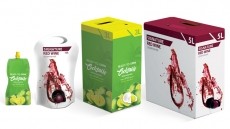Recent advances pave way for fish gelatine for food
the mammalian variety, may open the door for fish gelatine to fill
the gap for food formulators, says a new review.
"Fish gelatine (especially from warm water fish) reportedly possesses similar characteristics to porcine gelatine and may thus be considered as an alternative to mammalian gelatine for use in food products," wrote scientists from Universiti Sains Malaysia in the journal Food Hydrocolloids .
"Production and utilization of fish gelatine not only satisfies the needs of consumers, but also serves as a means to utilize some of the byproducts of the fishing industry," they added.
Gelatine is a translucent colourless substance, created by prolonged boiling of animal skin, connective tissue or bones.
It is most commonly used as a stabiliser, thickener, or texturiser in foods such as ice cream, jams and yoghurt, and is also used to improve the mouthfeel of various products.
But despite the functionality of gelatine, recent food safety fears such as BSE in cattle and avian 'flu in poultry have prompted consumers and marketers to look for products containing no animal derivatives.
One of the major problems for the industry has been convincing consumers that these concerns are unfounded.
Indeed, certain companies and institutions claim to have conclusively proven that there is no link between gelatine and BSE.
Furthermore, there is strong evidence that gelatine has health-promoting properties.
For example, the natural protein gelatine contains amino acids glycine and proline in a concentration that is around 10 to 20 times higher than in other proteins.
Potential of fish The new review, a timely state-of-play for the applicability of fish gelatine in the food industry, states that fish gelatine shares many of the functional characteristic of gelatine from pigs.
However, according to the Malaysian scientists, the product is hampered by current production levels.
"The current production of fish gelatine may not increase significantly, at least in the foreseeable future, as the availability of raw material, coupled with the relatively low yield will be limiting factors in fish gelatine production," they wrote.
"However, though fish gelatine will be unable to completely replace mammalian gelatine, it is hopeful that one day, it might become a niche product offering unique and competitive properties to other biopolymers, as well as meeting the demand of global halal/kosher market," they added.
Processing considerations
The reviewers raise questions over the scaling up of the processing conditions required to produce the fish gelatine, while noting that "securing control of the extraction conditions during this process still pose a problem for processors."
The advent of Good Manufacturing Practices (GMP) and HACCP (Hazard Analysis and Critical Control Point) necessitate the need for detailed study to standardise the purity of samples/raw material used.
Despite these challenges, the reviewers see great potential for fish gelatine in the food industry, particularly in niche but growing markets.
"The global demand for gelatin has been increasing over the years," they wrote.
"Recent reports indicate the annual world output of gelatin is nearly 326,000 tons, with pig skin-derived gelatin accounting for the highest (46 per cent) output, followed by bovine hides (29.4 per cent).
"However, although gelatin has such a wide range of useful applications, pessimism and strong concerns still persist among consumers with regard to its usage.
This is mainly due to religious sentiments (both Judaism and Islam forbid the consumption of any pork-related products, while Hindus do not consume cow-related products) as well as the enhanced and stricter adherence to vegetarianism throughout the world," they added.
Source: Food Hydrocolloids (Elsevier) Published online ahead of print, doi: 10.1016/j.foodhyd.2008.07.002 "Fish gelatine: properties, chalenges, and prospects as an alternative to mammalian gelatines" Authors: A.A. Karim, R. Bhat













